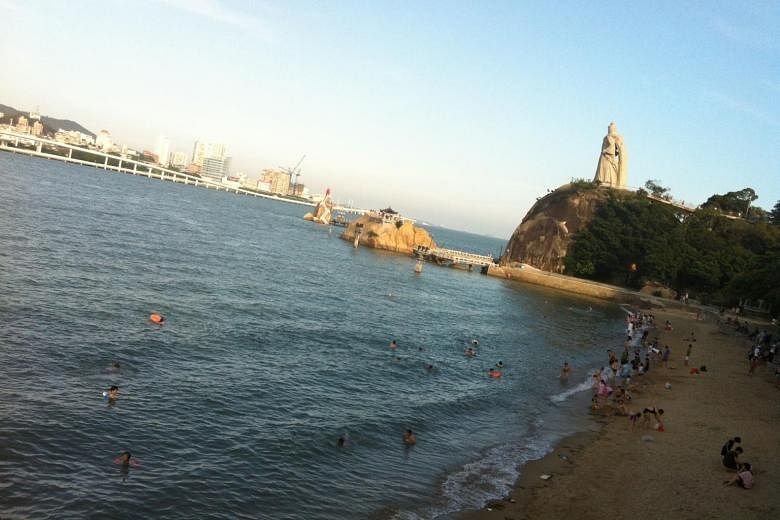BEIJING • The historical island of Gulangyu, which dates back more than 3,000 years, is named for the drum-like sound of waves hitting against its reefs. It is also dubbed Piano Island as tickling the ivories was a popular pastime on an island which used to be a place of residence for foreigners.
But being named a Unesco world heritage site may not be music to the ears of all.
There are fears that the island of less than 2 sq km - smaller even than Singapore's Pulau Ubin, which is about 10.2 sq km - may be swamped by visitors after the win.
Already it receives more than 10 million visitors a year, resulting in heavy pressure on the island, where the population flow should not exceed 25,000 per day ideally.
Typhoons, fire hazards, pests and diseases are all threats to the more than 2,000 historical buildings on the island, just six minutes from Xiamen by ferry.
To prepare for the bid, the Xiamen municipal government had rolled out protection laws and regulations for Gulangyu, repaired damaged historical buildings, opened more museums, and limited tourist numbers to the island, China's state news agency Xinhua reported.
"Better protection is what we want to achieve through the world heritage inscription," Mr Zheng Yilin, director of Gulangyu's management committee, told Xinhua.
-
Other sites inscribed this year:
-
SOME CULTURAL SITES
• Temple Zone of Sambor Prei Kuk, Archaeological Site of Ancient Ishanapura (Cambodia)
• Mbanza Kongo, vestiges of the capital of the former Kingdom of Kongo (Angola)
• Asmara: a Modernist City of Africa (Eritrea)
• Khomani Cultural Landscape (Republic of South Africa)
• Hebron/Al-Khalil Old Town (Palestine)
• The walled city of Ahmedabad (India)
• Okinoshima island (Japan)
NATURAL SITES
• Landscapes of Dauria (Mongolia, Russian Federation)
• Los Alerces National Park (Argentina)
With a commercial port opened at Xiamen in 1843, the island was later established as an international settlement in 1903. The former international settlement had 13 consulates, churches, hospitals, schools and police stations built by foreign communities from the middle to late 19th century.
In the early 20th century, overseas Chinese elites returned and built private residences on the island, often with a mix of eastern and western architectural styles.
Gulangyu, which is home to 20,000 residents, is one of the best-preserved international settlements in China, said Xinhua.
"The island was home to an international community made up of local people, overseas Chinese and foreigners," historian Wu Yongqi told Xinhua. "It was a distinct combination and the integration of their cultures made the island unique," he added.
Gulangyu has one of the highest piano ownership ratios in China, with nearly 600 pianos. Many of China's most celebrated musicians have come from Gulangyu.
"When I was a child, the sound of piano could be heard everywhere on the island," local pianist, Ms Fang Site, 34, told Xinhua.
Gulangyu has the first piano museum and only organ museum in China, both set up by Australian Chinese pianist and collector Hu Youyi.
Ms Fang, curator of the organ museum, said: "Music is an important part of Gulangyu's culture and my life. Gulangyu's inscription provides a great opportunity for the preservation and promotion of (its) music culture."

